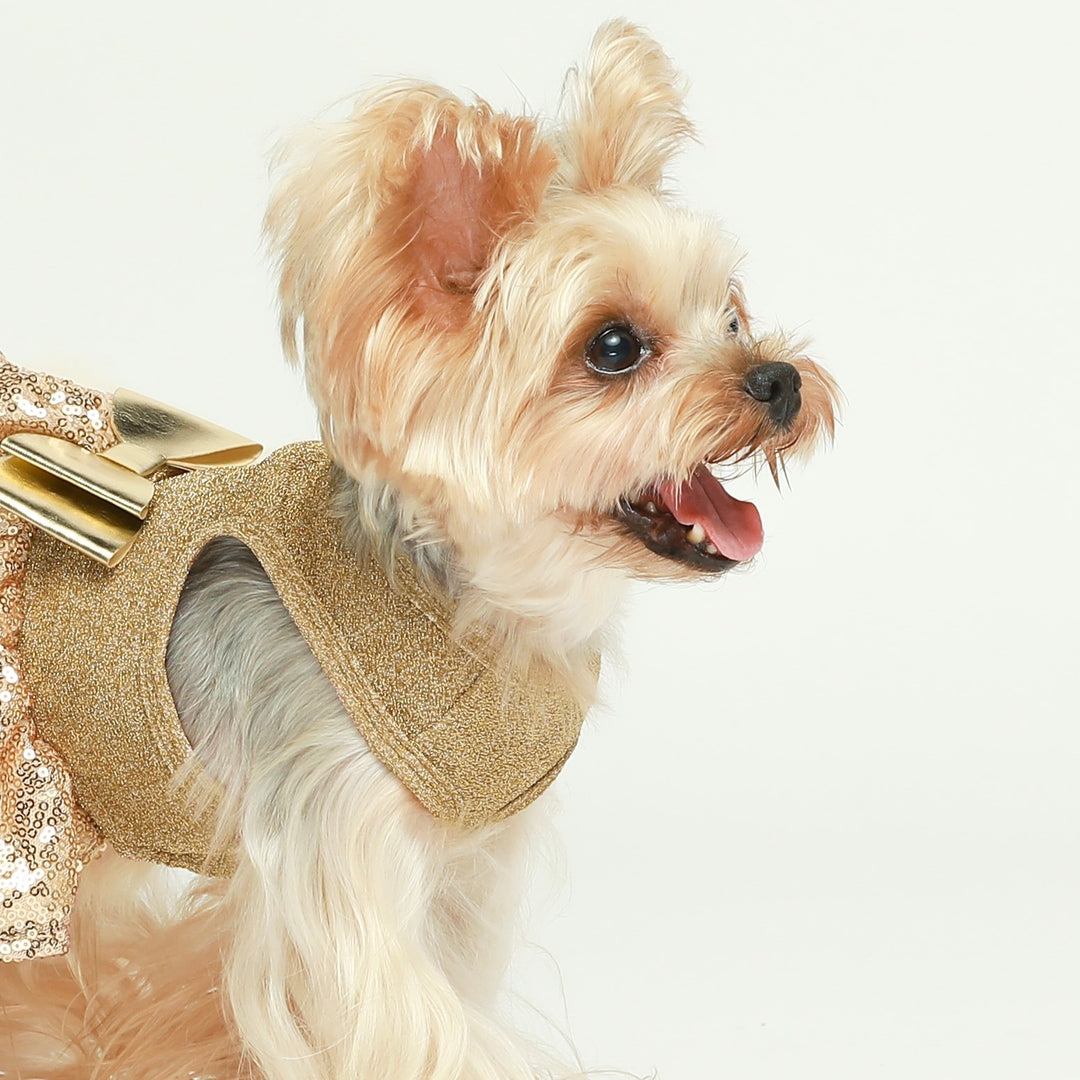Why Dogs Tilt Their Heads.
Introduction
As a dog owner, you’ve likely noticed your pup cocking its head quizzically to one side when you talk to it. This head tilt melts our hearts every time. It almost seems like they are trying extra hard to understand our words and commands. My dog will tilt her head when I ask if she wants dinner, almost like she is thinking “Hmmm, am I hungry?” It’s an adorable behavior that makes dogs even more lovable and fun to be around.

In this article, we'll dive into the possible reasons dogs tilt their heads. Is it just a cute habit? An attempt to hear better? Or a way for dogs to take in more information? We'll explore the leading theories behind why dogs of all breeds make this endearing move. Understanding this behavior can provide insights into how dogs perceive the world around them and improve their communication with us humans. While the head tilt is often seen as adorable, it's important to recognize and address any underlying behavioral issues that may arise, such as those outlined in common behavioral problems in dogs and how to address them.
Why Does Your Dog Tilt Its Head When You Speak?
Have you ever noticed your dog cocking its head from side to side when you talk to it? As cute as it looks, there’s actually more going on than we realize. When our furry friends tilt their heads, they’re trying to better understand what we’re saying.

Dogs depend a lot on body language and vocal tones to interpret our words. So one theory is that your pup is tilting its head to pinpoint where your voice is coming from. By adjusting their ears, they can pick up on subtle sound cues and aim their attention directly at you. It’s their way of getting a clearer “signal” when you speak.
The head tilt may also have to do with vision. Dogs have a wide field of view, but their muzzle can block part of their sightline. Tilting exposes more of your facial expressions, helping them decode your mood and meaning. It allows them to literally gain a whole new perspective on what you’re conveying!
Of course, years of positive reinforcement can make the head tilt an ingrained habit too. If you smile and give your dog attention when they make this move, they’ll repeat this body language during interactions.

So the next time you see your canine friend with a quizzical head tilt, know that it’s not random. They’re tuning into you, strengthening your bond, and trying their best to communicate. Understanding this foundation of your relationship leads to even more closeness with your furry family members.
Why Do Dogs Tilt Their Heads Back When They Howl?
Have you ever seen your dog stop in their tracks, throw their head back dramatically, and let out a howl that echoes through the neighborhood? As chilling as it looks, there’s actually meaning behind this ritual.
By craning their head backward, pups create the best acoustics for their built-in sound system. It allows the howl to reverberate loudly and travel farther—like the perfect positioning for an old-school boombox speaker!

This is because head tilting channels their ancestral wolf heritage. Wolves call their far-flung pack members by howling across long distances. That signature move helps their voices carry powerfully through the wild.
Our domesticated pups may not have a sprawling pack to locate, but they retain this primal vocalization urge all the same. So when your pooch throws their head back in a spirited awooo, they’re connecting to generations past by rallying the “pack” they do have – their beloved human family!
Of course, they also may simply be responding reflexively to a nearby siren wailing past. But I prefer to think my precious pet is just doing their ancient ancestors proud! Understanding this heritage makes bonding with our dogs that much more meaningful.

What Does Tilting the Head to the Side Mean?
Have you ever noticed your pup cocking their head quizzically when you talk to them? As cute as it looks, it’s actually your dog’s way of communicating. That signature head tilt can have a variety of meanings:
- Listening Closely - Just like we may lean in to hear better, your dog is tuning in their receptors. They know an exciting word like “walk” or “treat” could be coming!
- Gauging Your Mood - Your dog may tilt their head to get a better look at your facial expressions. It helps them understand your tone and emotions.

- Understanding Vibes - Dogs are incredibly intuitive. When they sense you’re happy, sad, or serious they may tilt their head as if to say “I feel you!”.
- Enhancing Their Hearing - Tilting angles those satellite dish ears to catch sound waves better, like adjusting an antenna. It especially helps capture tone and volume.
- Eliciting A Response - Let’s be honest, dogs know cuteness wins over humans. If head-tilting earns them praise and pets, they’ll repeat what works!
- Signaling Discomfort - Frequent head-tilting without a trigger can indicate an underlying health issue like an ear infection. Best get that checked out.

So the next time you catch your canine buddy with their head adorably cocked, know they are listening, processing, and communicating right back. Understanding this foundation of your bond makes owning a dog even more amazing.
When Does Your Dog Tilt Their Head Other Times?
Have you noticed your precious pup cocking their head at times not just when you talk? As animated as our canine friends are, head tilting happens in all sorts of situations:
- Processing Peculiar Sounds - Your dog may suddenly tilt in response to strange noises like fire alarms or construction equipment then look to you for reassurance.
- Attempting Playtime Decoding - During lively play, that head cock may precede the attack on their favorite squeaky mouse toy as they plan their next “hunting” strategy.

- Signaling Confusion - When met with a new command or an abrupt change in your tone, the familiar head tilt emerges. “Hmmm, run in circles? How does one do that??”
- Reacting to Visuals - Dogs tilt not just from sounds but unusual sights too. Mine will inspect slowly vanishing treats under blankets with that signature head angle.
- Flagging Discomfort - Frequent head tilting without an obvious cause can indicate issues like ear infections or dizziness. Best to get checked out.
So while we often see head tilting as our dogs trying to parse our words, keep an eye out for it in other contexts too. It could provide insight into their state of mind, health, or environment. Learning their language is part of the wonder of sharing our lives with these furry translators!
Which Breeds Tilt Their Heads Most Often?
Have you ever wondered if certain breeds of dogs are more likely to adorably cock their heads when you talk to them? Well, while any pup can develop head-tilting habits, some breeds do seem especially curious and attentive based on their traits.
Breeds historically bred to work closely with humans like Pomeranians and Corgis are often head-tilters. Their job has been to follow our cues closely. So it makes sense that a Corgi may tilt its head trying hard to parse a command, or understand why you just said “walkies” in an excited tone!

Spaniels, with their big eyes and floppy ears, are another attentive breed. That facial structure seems designed to pick up signals.Tilting may help them aim an ear or get a better view of our expressions. It’s them tuning in their receptors to get more information.
Sure, those cute smushed-face breeds like Pugs seem less likely to tilt given their physical proportions. But some still inherit a strong drive for human attention. My Pug hardly tilts her head, but she stares into my soul just the same, waiting for a cookie crumb to drop!
While we need more research, dog owners tend to notice more head-cocking curiosity in those breeds renowned for bonding with us. But get to know your own pup - they have their own special way of signaling they are tuned in to you! And that head tilt captures our hearts every time.

Why Do Some Dog Breeds Tilt Their Heads More?
Have you ever wondered why some dogs seem perpetually cocked in curiosity, while others rarely tilt their heads? There are a few structural and personality factors that contribute:
- Ear cartilage and ear strength - Dogs like Shepherd breeds have very erect ears that enable excellent sound targeting. Floppy-eared breeds like Cocker Spaniels rely more on head tilting to channel sound down the canal.
- Training history - Breeds selected over generations for partnership with humans tend to focus more on our cues, hence the frequent head tick of a Border Collie awaiting instruction.
- Facial structure and size - Those short smushed-nose pups don’t have to move much for an effective line of sight. But a big Husky may need to tilt quite a bit on occasion to leverage their limited vision behind all that fur and long snout!

- Personality inclination - Just as people vary in curiosity levels and awareness, canine temperaments range widely too. Terriers, for example, are always on high alert for stimulation, making head ticks more common.
- Prior positive reinforcement - If a dog was rewarded for tilting her head as a puppy, you likely have an ingrained head-cocker for life. That response becomes imprinted.
So while genetics and type truly play a role in head tilting tendencies, early life experiences also leave their mark. Each precious pup ultimately develops their own style of tuning into this world…and stealing our hearts in the process!
How Can I Tell If Your Dog’s Head Tilt Is Serious?
While the signature head cock of a curious canine warms our hearts, a persistent tilt with no obvious trigger could signal issues. Distinguishing a harmless tic from troublesome symptom is important as a pet owner.
If head slanting becomes oddly frequent without clear stimuli, yet other behavior seems normal, allergies or a mild infection may be brewing. Have your vet take a peek inside Fido’s ears just in case.

But sudden severe tilting accompanied by loss of balance, stumbling, eye twitching, or personality changes is cause for concern. It might indicate injury, ear problems, neurological conditions, or vestibular disease.
Likewise beware of head tilts plus signs of discomfort like whimpering, itching at the ears, or avoidance of touch. This usually means pain and infection rather than harmless query. Better get that checked pronto!
During examinations, vets will check for redness, inflammation, discharge or anything unusual down the ear canal for clues. Medication reactions can also sometimes cause persistent head slanting as a side effect.
Getting to the root of any puzzling or worrisome head tilting quickly leads to solutions and relief for beloved pets. Their wellbeing is our top priority.

Final Thoughts
The enduring head tilt of a curious canine has delighted dog owners for ages. As we have explored, this signature move reveals our dogs tuning in to understand us better. It signals focused attention, emotion reading, sound triangulation, and even their ancient instincts at play. While breeds built to work closely with humans seem especially attentive head-tilters, every dog has their own style of communication.

Learning to interpret your best friend’s body language leads to an even stronger bond. But we must also stay alert - a head tilt can sometimes indicate discomfort or illness rather than harmless curiosity. Distinguishing normal behavior from troubling symptoms allows swift solutions. Whether it is an endearing tic or concerning tell, the head tilt ultimately reflects our dogs’ devotion to connecting with their pack - both the human and canine variety! So the next time you catch that cute cocked head, appreciate the deeper meaning behind such a simple gesture.














